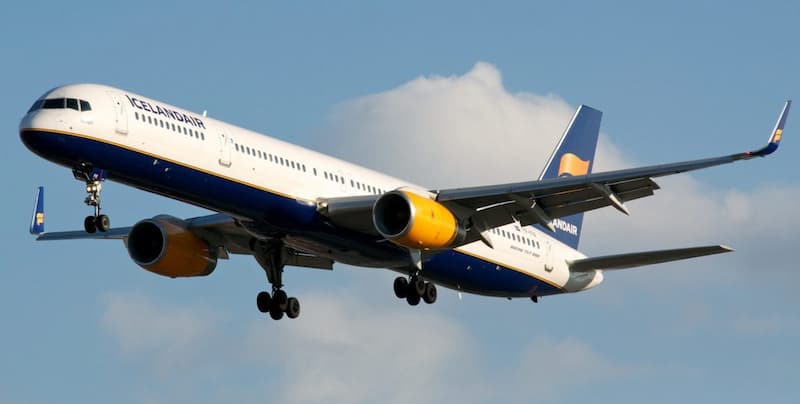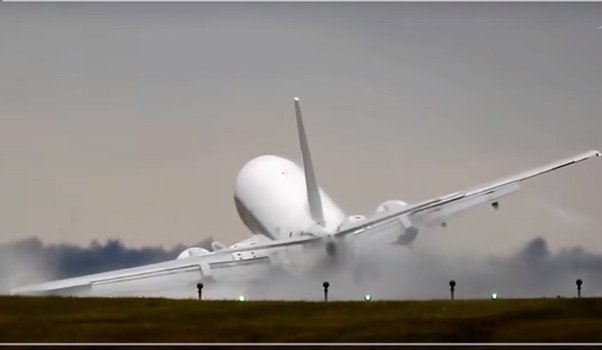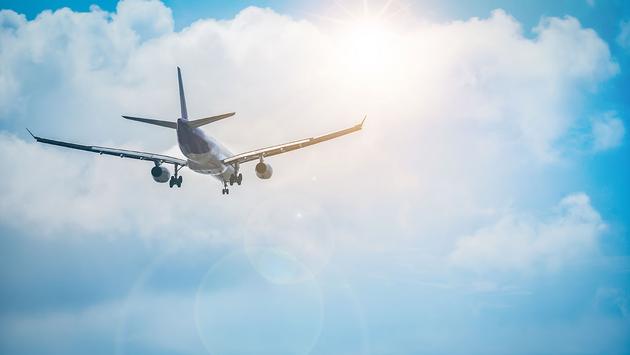How Bad Do Winds Have To Be To Cancel Flights

In the modern era of aviation, plane crashes involving high winds are almost unprecedented. It’s fairly common to cancel flights when the weather gets particularly bad, but how does windy weather affect flights? What wind speed delays flights? How windy does it have to be before planes can’t take off?
Is It Safe to Fly in High Winds?
Generally speaking, the answer is yes. In addition to modern aircraft being designed to perform well in high winds, pilots around the world must be able to demonstrate the skills to fly in high wind conditions in order to be licensed. Just as rain is almost never an obstacle to safe flying, even relatively high winds are rarely a problem.
Aircraft can take off and land in most (but not all) high winds
Of course, in some cases, strong winds can hinder takeoffs or landings, or cause turbulence during the flight, which we’re going to hit right away.
Why Can wind speed affect an airplane?
You may be wondering why wind speed affects a plane. The reason is that aircraft rarely fly in the exact same direction as the wind. Therefore, in order to maintain the desired heading in flight, it must constantly compensate for wind direction and speed. Even if an aircraft has its own way of propulsion, the speed and direction of the wind can significantly alter its travel through the air. This is often referred to as the “wind effect”. Therefore, keeping the aircraft on its intended air flight trajectory depends on the forward movement or thrust of the aircraft in the air, and the natural movement of that air, the wind.
Why Delays Flights When There Is A Strong Wind
When the ground is windy, the plane will struggle on the runway. That in itself is a reason not to risk flying but to cancel a flight but to do justice to the situation as you approach the airport, imagine it could be worse in the sky.
We never want you to worry about the safety of air travel. This is perfectly safe, however, airlines have to consider worst-case scenarios when deciding on flights. Every flight brings financial risk to the flight and it is in the airline’s best interest to keep it on time. When winds are strong enough to cause turbulence, wind shear and closed runways, delays are inevitable. Sometimes they are canceled.
Can Strong Winds Cause Aircraft Accidents?

As mentioned above, the wind itself is not dangerous. Pilots are well trained in aircraft control in windy conditions, they understand the limitations of an aircraft and how to maneuver it in strong winds.
However, wind gusts that change direction quickly and suddenly can be dangerous, especially during takeoff and landing. A sudden change in headwind or tailwind that causes a rapid change in an aircraft’s lift is known as “wind shear,” and it is one of the worst wind effects. Wind shear has long been considered a contributing factor in some aviation accidents, but other risk factors are almost always involved. Therefore, in general, wind speed itself is not the cause of aircraft accidents.
What Speed of Wind Delays Flights?

In fact, takeoffs and landings are the only times during a flight that high winds can cause flight delays, and most flights experience high winds at some point during their climb or descent. With this in mind, horizontal winds (also known as “crosswinds”) in excess of 30-35 km (about 34-40 mph) generally prohibit takeoffs and landings.
Extremely high wind speeds could cause the plane to have to abort the landing.
As for how this happens, it depends on where you are on the flight. If the plane is at the gate with strong crosswinds, air traffic controllers may delay takeoff as they do during heavy snow. If the plane tries to land in high winds, the pilot may decide to abort the planned landing, sometimes at the last minute!
High and Low Winds
The wind speed on the ground is very different from the wind speed in the upper atmosphere. In fact, high winds can actually significantly reduce the time it takes to fly, at least when they’re blowing from behind. These gusts, known as tailwinds, typically occur when planes are flying eastward, such as from the US to Europe, and at certain times of the year, long-distance flights can take more than an hour.
On the other hand, headwinds can lead to longer flight times, which is why westbound routes (such as those from most of the US to East Asia) tend to take longer than eastbound routes. Another example where wind can cause flight delays is when the wind is accompanied by thunderstorms, even though thunderstorms occur more frequently during climbs and descents than at cruising altitude.
Crosswind Landing
Let’s get back to the topic of crosswinds, the whole internet seems to be doing the same thing. Of course, while recent landings in Gibraltar and Amsterdam (and elsewhere) look pretty scary in the video, the truth is that pilots are trained to land in crosswinds and know when it’s best to give up and try another go-around.
Crosswind Landing
Crosswind landings don’t usually end in disaster.
From another perspective, while crosswinds can make great viral videos (and maybe some that make passengers’ stomachs upset), they’re not particularly dangerous. Like turbulence, crosswinds are almost certainly not going to crash your plane.
What Is The Effect of Different Wind Directions?
As mentioned above, the wind in the direction the plane is traveling has little effect other than changing the time it takes to fly. But crosswinds are another story, and strong crosswinds do make takeoffs and landings more difficult. But in the case of commercial airliners, they are not that effective in practical applications. Pilots are trained to handle crosswind takeoffs and landings, and while videos of crosswind landings may look dramatic, they rarely cause problems.
Light Aircraft
While in theory wind affects light aircraft the same as it does larger aircraft, in practice the situation is different. Light planes flown by private pilots are smaller and lighter, making them more susceptible to wind gusts. Therefore, the wind is much more dangerous to light aircraft.
There is an increased risk of light aircraft operations when strong winds are blowing. One of the main causes of light aircraft accidents is the loss of directional control during takeoff and landing in high wind conditions. In fact, the Aviation Safety Foundation’s General Aviation Weather Accident Safety Review shows that over an 11-year period, the National Transportation Safety Board identified wind as the primary cause of more than 2,800 accidents. So light aircraft pilots really need to be careful and respect windy weather.
With reasonable proficiency, most private pilots can handle surface winds of up to 20 miles per hour. However, the directions are very different, and one of the lessons that flight instructors find the most difficult to teach is crosswind landings. Private pilots need to understand their own experience and limitations of flying in strong winds, and the limitations of aircraft, for example, rear-wheeled aircraft are more difficult to maneuver in strong winds.
Conclusion
Whether you’re curious about the logistical implications of wind-delayed flights or looking for a more paranoid mindset, relax. While high winds can sometimes prevent planes from taking off or landing on time, winds don’t pose any danger to your flight. In fact, strong winds can cause slight delays, which is why it is still completely safe to fly in strong winds, even though they may look dangerous!



